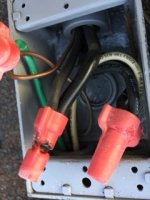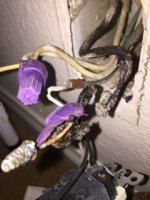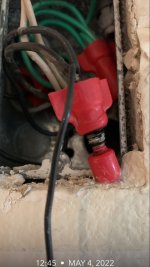Hello everyone, I've always been curious about whether wire nuts are insulated in order to comply with the OSHA splice requirement 1910.303(c)(3)(i) that "All splices and joints and the free ends of conductors shall be covered with an insulation equivalent to that of the conductors or with an insulating device identified for the purpose." Are wire nuts acceptable as insulation on a splice? I know it may be unlikely but if someone touches the splice with a wire nut, technically, you can still see copper inside the wire nut (exposed wires). I know tape (usually, regular electricians tape, which 99% of the time is not rated as insulation) is used to secure the splice so the wire nut doesn't fall off, but is that acceptable as insulation replacement?
Thanks in advance for your insight.
Thanks in advance for your insight.




